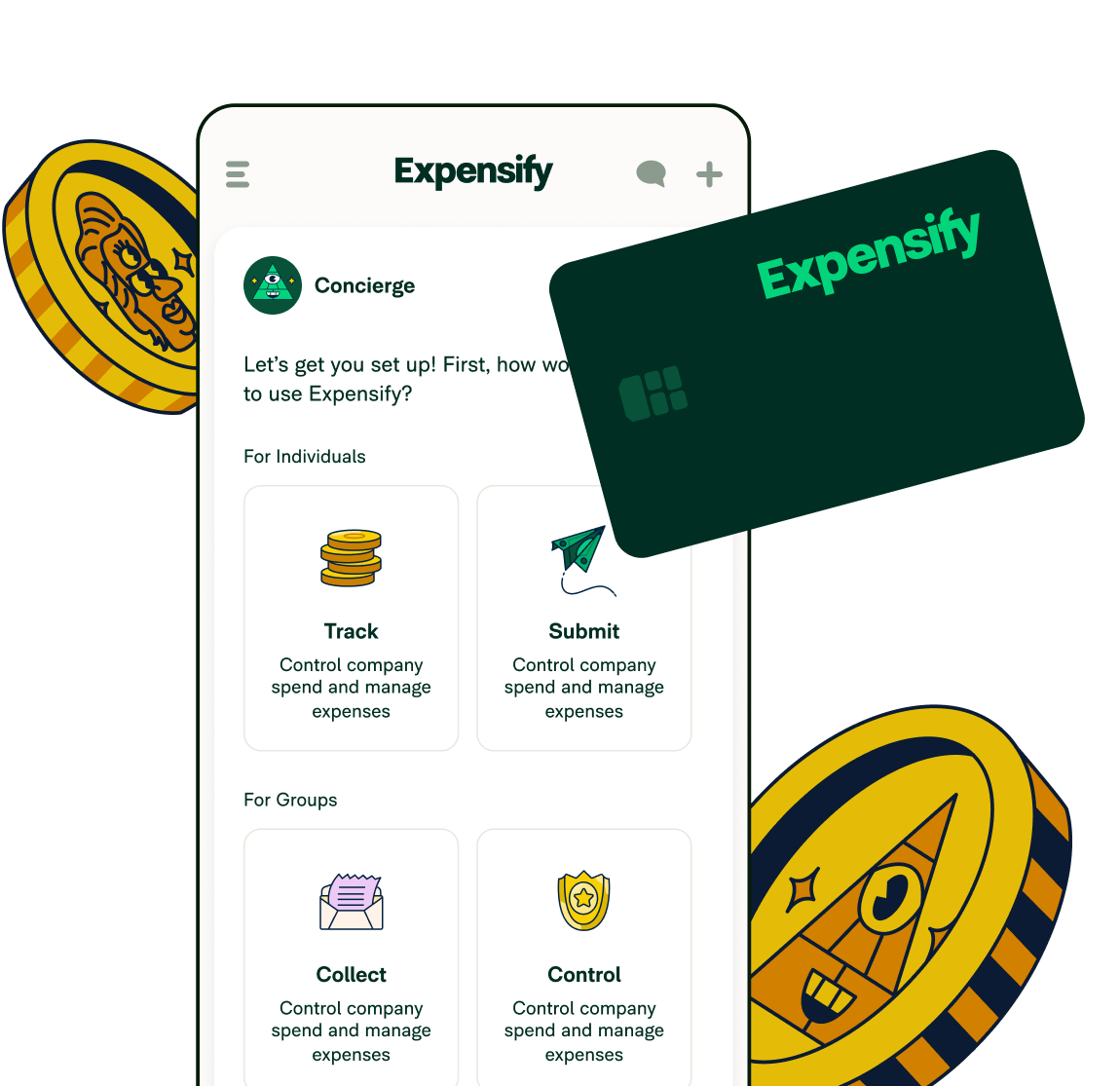Strategies to prevent expense fraud

Managing business expenses and employee reimbursements is a tedious task and therefore easy to overlook what may be a clear red flag. Obviously, as a business owner, you need to take action to combat and prevent expense fraud. But, how?
With expense fraud expected to reach over $16 billion by 2027, now is the best time to establish strategies to protect your organization from expense fraud. In this article, we’ll look at different types of expense fraud, understand how to detect it, and give tips to help your organization take strides toward preventing it. Let’s get into it.
What is expense fraud?
Expense fraud is the act of falsifying business expenses for personal gain. It happens when employees submit fake receipts, fictitious expenses, or inflated business expenses as legitimate costs. Naturally, this fraudulent activity can significantly impact an organization’s financial health and integrity.
Common types of expense fraud include false claims, altering expense report details, and misusing corporate credit cards for personal purchases. Employees might also manipulate approval processes by submitting duplicate receipts or claiming non-existent business trips. These deceptive actions increase the risk of fraud within a company.
The impact on organizations is substantial, leading to financial losses, strained budgets, and compromised internal controls. Fraudulent claims divert funds from actual business expenses and undermine trust and morale within the finance team. Implementing strong expense policies and regular training can help prevent and reduce instances of expense fraud.
Common types of expense fraud
We’ve briefly touched on the common types of expense fraud, but let’s get into more detail.
Mischaracterized expenses
Misrepresentation of expenses involves altering the details of actual transactions to make them appear as legitimate business expenses – like passing off personal expenses as business needs. Employees might change purchase dates or vendors to match their business activity, making it challenging to detect discrepancies.
Examples:
Claiming a family dinner as a “client entertainment” expense.
Putting new clothes on the company card, saying they’re for an important meeting (when they’re just for everyday wear).
Claiming mileage for personal trips, pretending they’re work-related. Or, booking a trip and then canceling it to get a flight credit, which is also known as flight credit fraud.
Companies without systems in place to track expenses like employee’s flight credits can easily forget about this and the flight credit can then be used by the employee for personal travel.
Luckily, applications like Expensify Travel, for example, track flight cancellations and credits. With the dashboard analytics included, you can easily see which employees have outstanding flight credits and ensure they use them for business purposes instead of their own personal travel.
Fictitious expenses
Fictitious expenses are entirely fabricated claims submitted by employees. This could involve creating fake receipts or inventing transactions with non-existent vendors or suppliers, deceiving the expense reporting process to gain unauthorized reimbursements.
Examples:
Inventing a business trip and submitting fake receipts for travel, accommodation, and meals.
Creating fake invoices from non-existent vendors for equipment or services.
Claiming reimbursement for office supplies that were never purchased.
Inflated expenses
Inflating expenses refers to increasing the reported costs of legitimate expenses. Employees might exaggerate meal costs or transportation fares while on a business trip. These inflated claims can slip through approval processes without being detected.
Examples:
Exaggerating the cost of meals or entertainment expenses.
Overestimating mileage reimbursement for personal trips disguised as business travel.
Inflating the price of items purchased with a company credit card.
Multiple reimbursements
Multiple reimbursements occur when employees submit the same expense more than once, either by submitting duplicate receipts or resubmitting the same claim across different reporting periods. This can lead to unauthorized multiple payouts for a single expense.
Examples:
Submitting the same expense receipt multiple times for different reporting periods.
Resubmitting a previously approved expense claim after it has already been reimbursed.
Claiming reimbursement for the same expense from different departments or projects.
Identifying expense fraud
Detecting expense report fraud begins with recognizing telltale signs. Here are some ways to identify expense fraud in your small business.
Red flags and warning signs
Look for inconsistencies in receipts, frequent submission of vague expenses, or requests exceeding standard corporate card limits. Watch for duplicate submissions or claims without proper documentation. These red flags can help finance teams spot false expense claims before approval.
Role of data analytics
Data analytics plays a crucial role in uncovering expense fraud patterns. Analyzing trends in expense reports over time can highlight anomalies that merit further investigation. Automated systems can flag unapproved personal expenses and cross-check them with legitimate business expenses. This enhances internal controls and reduces the risk of expense reimbursement fraud.
Employee behavior and its link to fraud
Employee behavior often provides clues about potential fraudulent activities. Changes in corporate credit card spending patterns or repeated expense policy violations can signal issues. Regular training on corporate expense expectations and ethics helps curb fraudulent actions. Encouraging transparency and open communication can also deter employees from attempting fraudulent claims during business trips.
Prevention strategies for expense fraud
Expense fraud is a significant risk that can lead to business financial losses. To protect against such fraudulent activities, companies must implement robust prevention strategies. So, how do you prevent expense fraud? The following are some strategies to consider.
Embrace technology
Leverage expense management software to help admins review submissions during the reimbursement process. Not only does this streamline the workflow, it also creates a digital trail, making it easier to track and audit expenses. Automated systems can flag irregularities for further investigation.
For example, when an employee uses Expensify’s receipt scanning app:
The merchant, date, and amount are automatically input using OCR technology.
If any of these points are edited or input manually, they are flagged to ensure the approver takes a closer look at the expense.
If an expense is a duplicate of another expense attached to a report, it’s flagged for both the submitter and the approver to review.
By leveraging technology for fraud prevention, you can use automation to help minimize human error or oversight.
Establish clear expense policies
Maintaining clear, detailed policies reduces the likelihood of misunderstandings or intentional fraud, so be sure to offer clarity to employees by defining and communicating expense policies to all employees. In addition to writing down and communicating the policy, you can:
Specify what classifies as a legitimate business expense and provide guidelines for using categories and departments.
Require images of receipts or invoices to accompany reimbursement requests, which helps prove the validity of the expenses and facilitates audits.
To streamline the reporting process, consider implementing a company credit card or corporate card program. With every swipe of a corporate card, you can be confident that the merchant, date, and amount have not been manually input or edited.
With Expensify, you can require receipts for all or specific transactions, so individuals cannot submit reports without attaching those required documents.
Tighten the approval process
Implementing a stringent approval process for expenses helps to reduce the chance of expense fraud during the expense submission process. Consider:
Setting clear guidelines involves multiple layers of review and approval to ensure that no employee has unchecked authority over reimbursements.
Developing a multi-level approval workflow and segregating duties related to the reimbursement process, separating roles such as approval and reimbursement. This segregation reduces the risk of collusion or unauthorized reimbursements, not only adding to the element of accountability but also deters potential fraudsters, knowing that several sets of eyes will be reviewing their submission.
Conduct regular audits
Don't let complacency sneak in - conduct regular audits of your company’s expense reports to catch any discrepancies. Whether it's a monthly, quarterly, or even random check, staying vigilant will help you stay one step ahead of potential fraud. While performing regular audits, keep an eye out for:
Travel and expense trends within your organization, specifically any repeating merchants or amounts.
Excessive claims by an individual or department.
Monitoring trends helps to proactively address issues before they escalate. To stay ahead of evolving fraud tactics, it’s recommended to regularly reassess the cadence of audits and review periods and update preventive measures.
The bottom line in detecting and preventing expense fraud
Training employees to properly submit expenses and educating approving managers and admins on red flags can go a long way in preventing expense fraud. Still, it is an effort that requires a combination of technology, training, and good old-fashioned vigilance.
Expense fraud FAQs
-
Fraud expense coverage is an insurance policy that protects businesses against losses resulting from fraudulent financial activities, including expense fraud. It offers financial recovery options for companies affected by such fraudulent claims, ensuring protection against unexpected impacts on financial health.
-
Expense account abuse occurs when an employee intentionally overstates or falsifies expenses for personal gain. A common example is submitting receipts for personal meals as business expenses during a business trip, claiming them for reimbursement under the guise of legitimate expenses.
-
Expense manipulation involves altering or falsifying expense reports to claim unauthorized reimbursements. This can include inflating actual costs, submitting fake receipts, or categorizing personal expenses as business-related, all aimed at defrauding the organization.
-
Expense reimbursement compensates employees for out-of-pocket expenses incurred on behalf of the company, such as travel, meals, or lodging during business trips. It ensures that employees are fairly repaid for legitimate expenses, provided they comply with the company's expense policy.
-
Capitalization of expenses fraud involves misrepresenting operational expenses as capital expenditures on financial statements. This manipulation inflates the company's assets and conceals actual costs, misleading stakeholders about the organization's financial performance.
-
Catching accounting fraud requires implementing strong internal controls, conducting regular audits, and utilizing automated systems for accuracy in financial reporting. Educating employees on fraud detection, maintaining whistleblower policies, and fostering a transparent corporate culture also play significant roles in identifying fraudulent activities efficiently.
Track your expenses with Expensify
By implementing the strategies we’ve talked about in this article, accounting firms, small businesses, and enterprises can confidently protect their books, ensuring a secure and flourishing financial landscape. Ready to get started? Enter your information below and we’ll take it from there.








